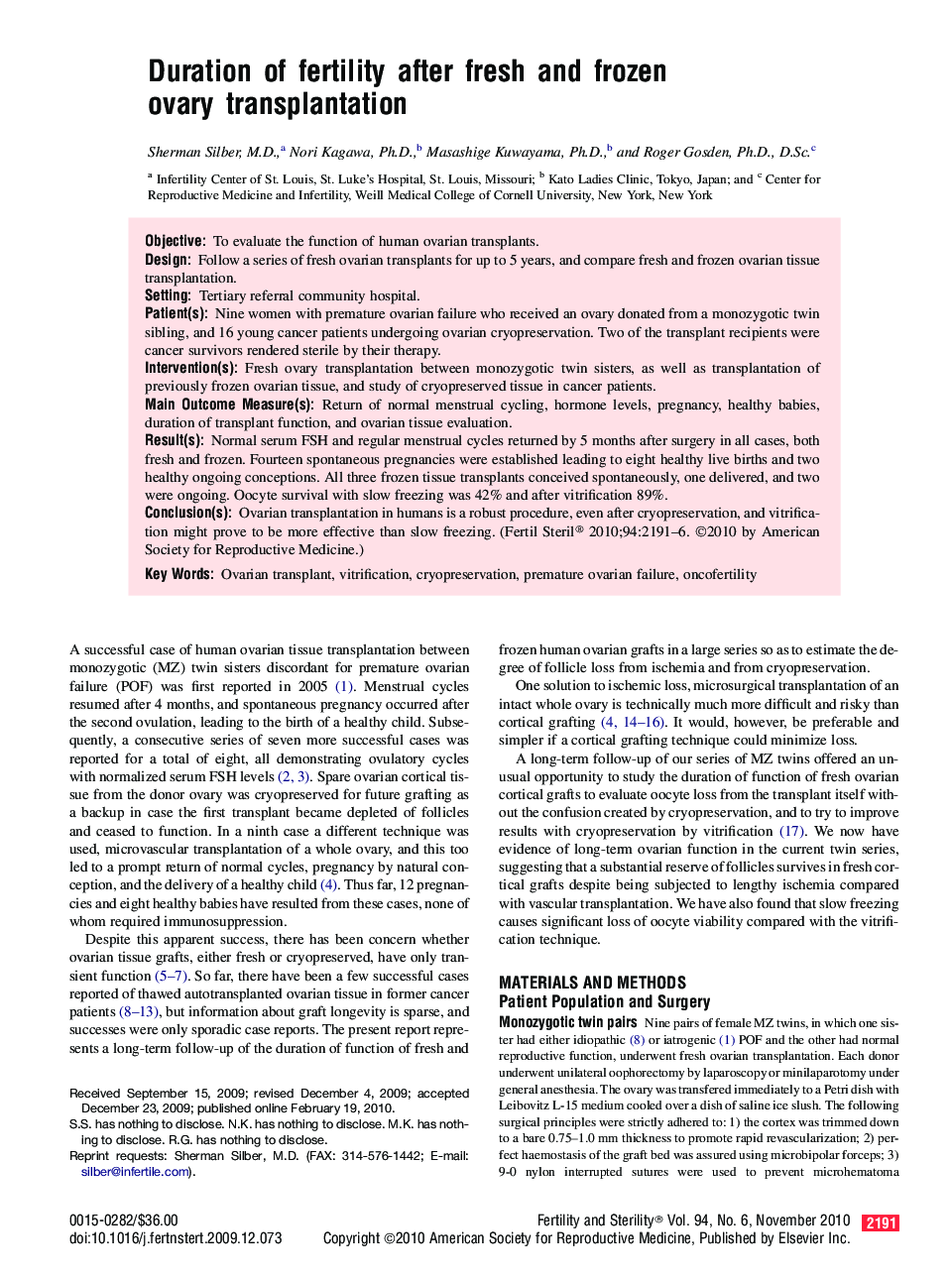| Article ID | Journal | Published Year | Pages | File Type |
|---|---|---|---|---|
| 3932846 | Fertility and Sterility | 2010 | 6 Pages |
ObjectiveTo evaluate the function of human ovarian transplants.DesignFollow a series of fresh ovarian transplants for up to 5 years, and compare fresh and frozen ovarian tissue transplantation.SettingTertiary referral community hospital.Patient(s)Nine women with premature ovarian failure who received an ovary donated from a monozygotic twin sibling, and 16 young cancer patients undergoing ovarian cryopreservation. Two of the transplant recipients were cancer survivors rendered sterile by their therapy.Intervention(s)Fresh ovary transplantation between monozygotic twin sisters, as well as transplantation of previously frozen ovarian tissue, and study of cryopreserved tissue in cancer patients.Main Outcome Measure(s)Return of normal menstrual cycling, hormone levels, pregnancy, healthy babies, duration of transplant function, and ovarian tissue evaluation.Result(s)Normal serum FSH and regular menstrual cycles returned by 5 months after surgery in all cases, both fresh and frozen. Fourteen spontaneous pregnancies were established leading to eight healthy live births and two healthy ongoing conceptions. All three frozen tissue transplants conceived spontaneously, one delivered, and two were ongoing. Oocyte survival with slow freezing was 42% and after vitrification 89%.Conclusion(s)Ovarian transplantation in humans is a robust procedure, even after cryopreservation, and vitrification might prove to be more effective than slow freezing.
